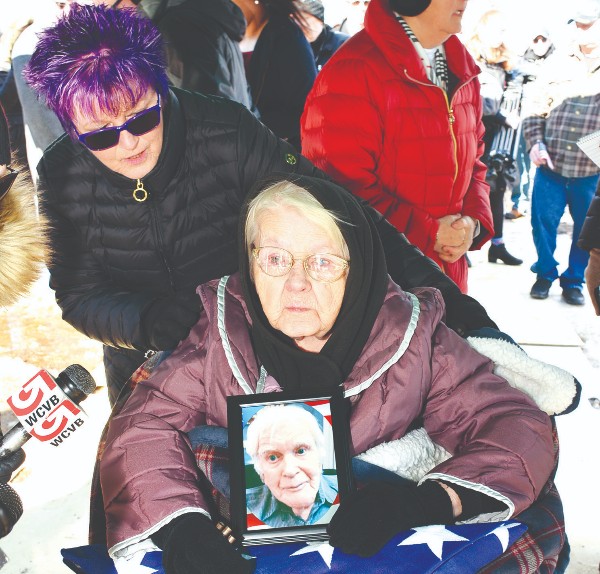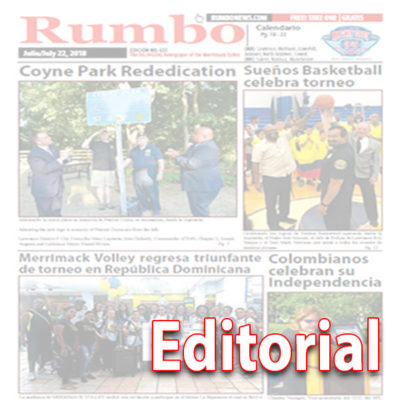
By Tomas G. Michel
In the Merrimack Valley we have an implicit caste system, one we have brought over from our Latin-American motherlands —as a parasite— in the shape of discrimination. Phrases like “You need to perm that bad hair of yours”, “Refine the race”, and “Couldn’t you get yourself a lighter boyfriend” are proclamations that until this date, we hear from unapologetic parents and grandparents whom tend to be mulattos or mestizos themselves.
It is called Colorism, a skin tone stratification system, that according to Margaret Hunter in a research published by the Sociology Compass Journal, “privileges light skinned people of color over dark in areas such as income, education, housing, and the marriage market.” Though racism may encompass colorism, the latter has the peculiarity that is practiced by people within the same community or ethnic group, in order to exercise power or supremacy; and one of the groups one can observe this phenomenon is amidst the Latino Diaspora in the United States.
In the Commonwealth of Massachusetts, with a population of 6,902,149, there’s a count of a 12% identified Latinos (an estimate of 800,000), residing here as of 2018, according to the U.S. Census Bureau. Furthermore, Demographers from the same agency projected that given that deaths outnumber births amongst Anglo people in more than half of the states, it is expected that this population could drop to less than 50% by 2045 (25 years from today); hence, becoming a minority in the country according to an article by Sabrina Tavernise, published on June 20th, 2018 in the New York Times. As a result, Latinos will soon become the largest minority group in the U.S. making necessary to discuss in depth, how someone’s integral growth can be affected by the amount of melanin residing on their skin, as of 2019.
After reading Albert Memmi’s book The Colonizer and the Colonized, one can reasonably conclude that first, colorism is a phenomenon that affects former colonies and its population; second, that it is intrinsically interconnected in the interdependence relationship ex-colonizers and ex-colonized have; and lastly, it adds a positive value to lighter skin color tonalities, inherited from European imperialism and hegemony.
In a conversation with the Puerto Rican Author Yolanda Arroyo Pizarro —my writing mentor—, she commented “A 19-year-old freshman college student of mine, does not know how to handle the rejection her dark father receives (within the family nucleus) from her maternal side whose predominantly lighter. I even know from a case of a young girl that wanted to whiten her skin so bad, she used bleach detergent in an attempt to achieve it”.
To be black and Latino in the United States is a blessing with double the burden.
When people exercise colorism, they do not consciously understand the impact of their behavior. That’s why we can observe people of color identifying themselves as light-skinned or dark-skinned, as if it was an act that mattered or had a concrete consequence. Well, according to a research developed by the Sociologist Amelia R Branigan and published in the Socius Journal, “Lighter-skinned minorities are sentenced less severely than dark-skinned minorities, and color may affect the likelihood of incarceration, in context to the fact that 75% of the law enforcement officers are white in the United States.” So, can it be rather convenient to be light-skinned as a result of our normative bias?
Skin color partiality has an interesting way to add a negative value to dark skin when it has been preceded by categories and statement that support it. All that it is negative is dark/black, as black magic (compared to white), a black cat or even the black death (the bubonic plague). That’s why when Marvel’s Black Panther movie directed by Ryan Coogler was released on February of 2018 I sobbed without consolation. This film was an irreverent act of blackness celebration and an award to African culture which it was long past due. There was appreciation for the black female beauty without the interference of Eurocentric standards. Odes to the African anthropologic richness, excluding the often-misrepresented connotations of savagery. And the showcasing of a black-man superhero figure, that served as a dignified representation for the black man all over the world.
After I completed watching the film, for the first time in my life I felt an overwhelming joy pertaining to who I was. A guy from the Caribbean, with a genetical background composed of three ethnic groups: Spanish, Tainos and Africans, feeling celebrated in completion. After the film, I no longer felt the need to bleach, whitewash or even perm that part of me that I had been taught to hide and disguise. Since last February —Black History Month— I began feeling proud of my African ancestry. More than empowered, I wanted to become an ambassador of the black culture platform. And although on a daily basis we receive messages from the media that diminish our dark skin tones, I invite the readership to actively look for ways to feel proud of the genes we inherited from mother Africa.
Just like Rosa Parks did not obey the order to move to the back of the bus on 1955, I will not keep acting like colorism within our community should continue to be part of our cultural norm. I will continue to attempt to exterminate that fukú that follow the Hispanic community around.


